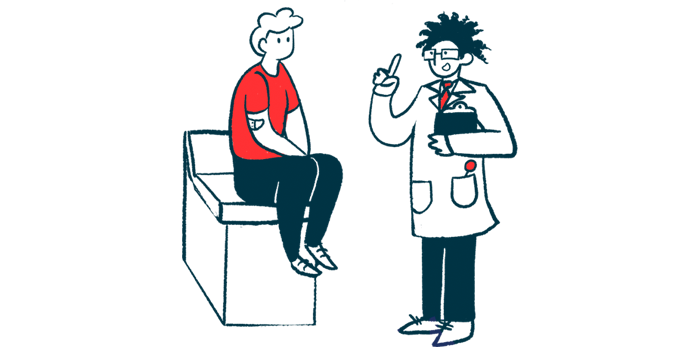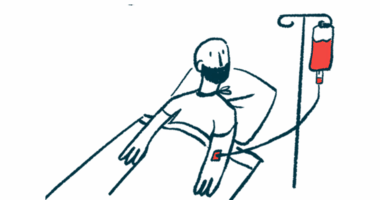Use of extended half-life products in hemophilia A raises healthcare costs
Study finds patients in Japan switched from standard replacement therapies

Prescriptions for extended half-life products to hemophilia A patients in Japan increased from 2016 to 2020, according to a new study that analyzed real-world data from a hospital database.
This was accompanied by an increase in healthcare costs seen for patients switching from standard half-life factor replacement therapies to extended half-life products, the study found.
More patients also were prescribed emicizumab, a nonfactor therapy sold as Hemlibra, with these patients having the highest median annual treatment costs.
“Given the need for long-term prophylaxis, it is important to understand the medical expenditures associated with the use of [factor replacement therapies] and nonfactor products in real-world clinical practice,” the researchers wrote.
This study “found an increase in dispensing of [extended half-life products] versus [standard half-life factor replacement therapies] among Japanese patients with [hemophilia] A, along with an increase in associated healthcare expenditures for patients who switched,” the team wrote.
Titled “Real-World Amount of Clotting Factor Products and Non-Factor Products Dispensed and Annual Medical Expenditures for Japanese Patients with Haemophilia A,” the study was published in the journal Drugs – Real World Outcomes.
A look at real-world use of extended half-life products for hemophilia A
Factor replacement therapy is the gold standard treatment for hemophilia A, a disease caused by the lack of a blood clotting protein called factor VIII (FVIII). In this type of treatment, a working version of FVIII is given to patients to make up for the protein they are missing, thereby reducing the frequency and risk of bleeds.
These therapies can broadly be divided into standard or extended half-life products, depending on how long the delivered clotting factor remains in the bloodstream. In contrast to standard half-life therapies, clotting factors in extended half-life therapies have undergone molecular modifications to increase the amount of time they remain active in the body.
Some patients with hemophilia A may also opt for nonfactor therapies, such as emicizumab, which promotes blood clotting by mimicking the function of FVIII, instead of traditional factor replacement therapies.
In this study, researchers wanted to explore the use and associated healthcare costs of different treatments for Japanese patients with hemophilia A.
To that end, they analyzed real-world patient data gathered from 2016 to 2020 from a large-scale hospital-based administrative database.
The study involved 974 patients, all of whom had two or more prescriptions for the same factor replacement therapies or emicizumab within the first six months of initially filling a prescription.
The results showed that the outpatient use of emicizumab increased in the two years following its launch in Japan in 2018, with the proportion of patients using the therapy growing from 17% in 2019 to 25% in 2020. Overall, the use of either an extended half-life therapy or emicizumab increased from 15% in 2016 to 72% in 2020 — an increase of 380%.
Median annual total healthcare costs per patient increased twofold from 9,200,230 yen (about $84,000) in 2016 to 19,748,221 yen (about $181,000) in 2020, the data showed. The median annual therapy expenditure per patient also rose by twofold in the same period, from 8,723,120 yen, or about $80,000, to 18,051,689 yen, or approximately $166,000.
Greater increases in yearly treatment costs per patient also were seen for individuals receiving emicizumab between its launch in 2018 and 2020. Specifically, those costs increased from 26,030,206 yen (about $239,000) to 45,430,408 yen (approximately $417,000).
Over the course of the study, nearly one-quarter of all patients (23.9%) switched from standard half-life replacement therapies to extended half-life products, the data showed. The greatest proportion of patients switched from rurioctocog alfa to either rurioctocog alfa pegol (sold as Adynovate in the U.S.) (45.5%), or efraloctocog alfa (17.2%).
Prices are higher, in one case by 40%, for extended half-life products in Japan
Extended half-life therapies are priced higher than standard half-life therapies in Japan, the study noted. For example, the price of the extended half-life product rurioctocog alfa pegol is approximately 40% higher than the price of the standard half-life product rurioctocog alfa.
The higher prices for extended half-life therapies reflect the expectation that switching to these products will lead to a decrease in the median dosage of the therapy that’s dispensed for treatment. Interestingly, researchers observed a similar or increasing trend in the median dosage dispensed for extended half-life therapies following the switch.
Overall, these results provide insight into the treatment and expenditures associated with [hemophilia] A in Japan and highlight the disease burden in patients requiring hospital care.
“These findings suggest that there has been higher and/or more frequent dosing for [extended half-life therapies] than was originally assumed,” the researchers wrote.
This could be due to patients requiring more intense treatments, or to previously undertreated patients receiving more treatment with extended half-life therapies, these data suggest. It also may have resulted from improved treatment adherence after the switch, the team suggested.
Given the higher prices for extended half-life therapies, the researchers found that a switch to extended half-life products was associated with higher median treatment costs per patient, as well as higher median total healthcare costs.
“Overall, these results provide insight into the treatment and expenditures associated with [hemophilia] A in Japan and highlight the disease burden in patients requiring hospital care,” they wrote.








